The Apple iPad Air 2 Review
by Joshua Ho on November 7, 2014 9:30 AM EST- Posted in
- Tablets
- Apple
- Mobile
- iOS
- ipad Air 2
CPU Performance
Now that we’ve managed to take a good look at the changes between the A8 and A8X, we can get a good idea of what those differences translate to in some real world performance. While we’ve already seen pure CPU performance, such differences can be small when viewed from real applications. To this end, we use a few browser benchmarks and similar benchmarks. I definitely want to caution against comparing SoCs across platforms though, as rendering engines have a significant effect upon the performance of the device.


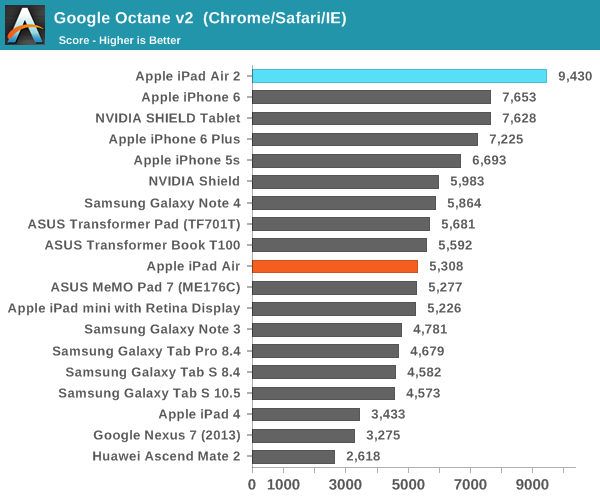
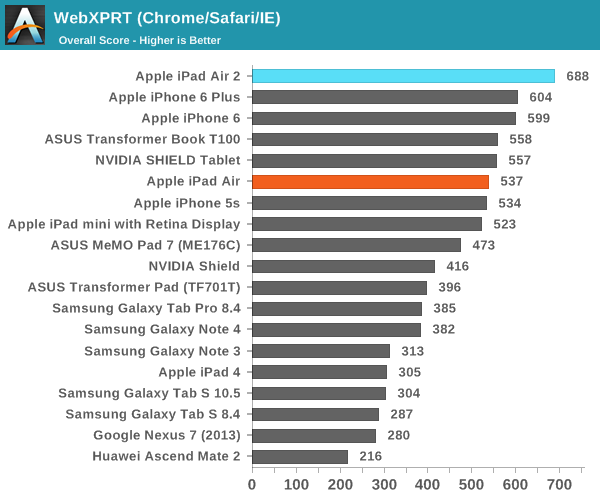

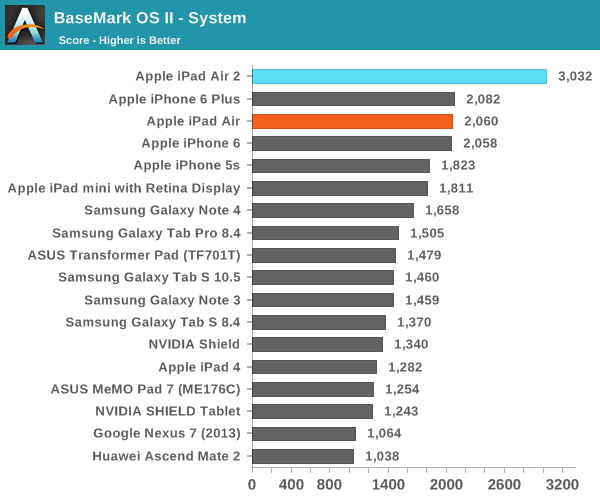
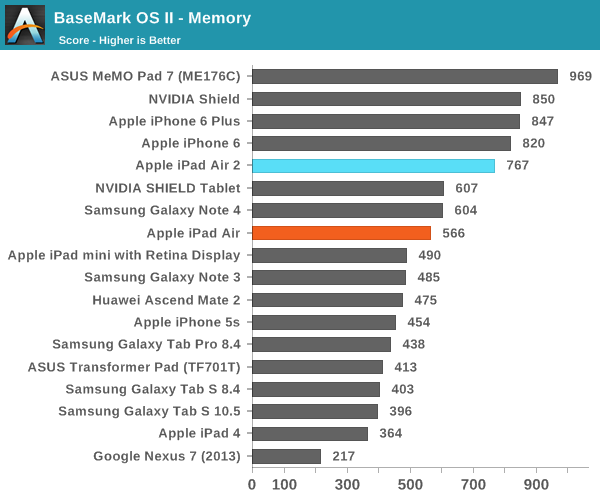
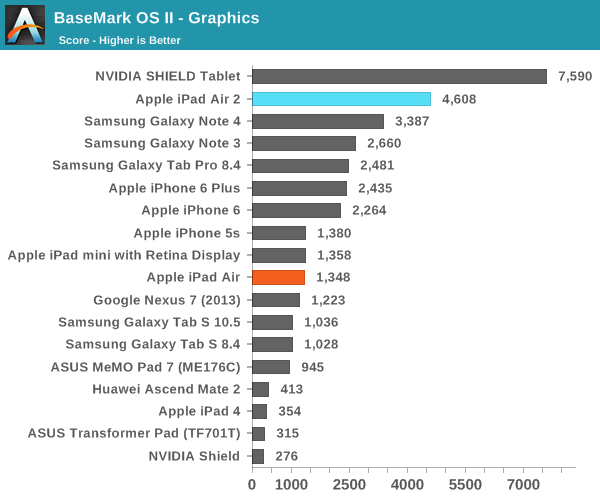
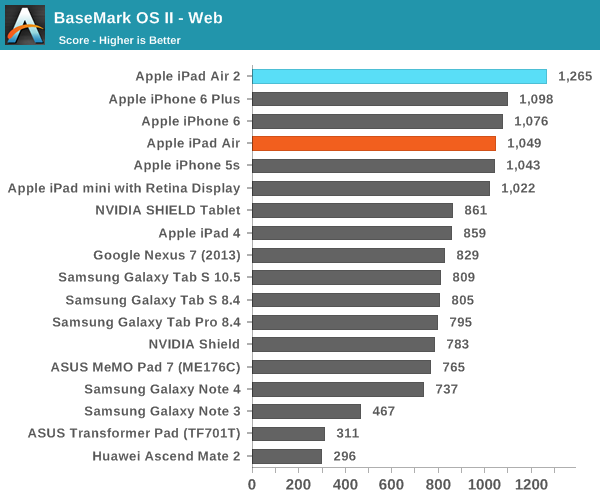
There's really not too much that needs to be said here, as the extra core and minor clock speed bump make for ridiculous amounts of performance. The A8X is class-leading here despite generally having fewer cores and lower clocks than the rest of the competition. However, in comparison to A8 we don't see a massive jump in performance. This seems to suggest that even a third core will invoke diminishing returns in general, although these changes mean that it's enough for the iPad Air 2 to be one of the fastest ARM-based devices on the market. One can see an odd regression in the Basemark OS II storage test, but this is likely to be production variances in NAND quality rather than anything notable.










226 Comments
View All Comments
kron123456789 - Friday, November 7, 2014 - link
"looks like K1 doesn't support FP16." — well, it really doesn't. K1 has no FP16 ALUs. But it does have a few FP64 ALUs. It's Kepler after all.JoshHo - Friday, November 7, 2014 - link
We have had an ongoing internal debate over how to best represent performance in thermally-limited scenarios. However, the goal of our specific test is to try and show the lower bound for performance although we will include the full FPS graph from here on out.It's certain that the CPU is fully capable of throttling on the iPad Air 2 much more easily, but as far as we can tell GPU-bound workloads are unlikely to throttle on the iPad Air 2 and performs better than Tegra K1 in this area.
lucam - Friday, November 7, 2014 - link
See the Xiami MIpad..and then comment please..tralalalalalala40 - Friday, November 7, 2014 - link
TouchID is for enterprise. No more 10 digit pins every 5 min!KPOM - Friday, November 7, 2014 - link
True. I acquired the Air 2 primarily for this reason. The added performance and updated design are gravy.Georges003 - Friday, November 7, 2014 - link
I noticed the following on all current and previous generations iPad air and iPad mini.On a white screen (for example blank document/note), pushing with one or more finger(s) on the back of the ipad or on the screen itself, displays a dark shadow in the area being pushed.
I have not observed this effect on the iPhone 6, my iPhone 4s and iPad 4.
Did you or anybody else notice this as well?
If yes, how do you feel about it since this without any doubt the result of design compromises for making the device thin and light?
blackcrayon - Friday, November 7, 2014 - link
I can notice this only if i strongly and deliberately press on the device. But I haven't figured out why anyone would or could do that in normal use by mistake. Why would anyone grip the device that hard?Georges003 - Friday, November 7, 2014 - link
I’ve tried to reproduce this effect on a least 8 devices in 2 different stores and it was present on all of them. On some devices you really didn't have to push very hard and on some the only thing you had to do is to pick it up.Typical applications were one would push “harder” on the screen: Ipad used as a music instrument, games, artists using ipad with pressure-sensitive pens, …The question is not why one would press this hard but why do we accept this while iphones, older Ipads and most, but not all, premium tablets of the competition clearly show that touch screen devices can be designed without showing such behaviour.
blackcrayon - Friday, November 7, 2014 - link
Is the Nexus 9 one of your premium tablets of the competition? I hope not...I also doubt you will generate much pressure on the *back* of the device by pushing harder on the screen. Isn't that on the other side? :) I notice you've "tried" to reproduce this effect. I still don't think this is something that's going to happen in normal use. I bet you'll be outraged over the fact you can break one by putting it on your knee and pressing both sides.
Georges003 - Friday, November 7, 2014 - link
The Nexus 9 happens to be a device with a similar behaviour as the iPad Air 1/2 … great OS but, in my opinion, not a "premium" device.Sushisamurai (link) also commented on this review. He mentions “ … with the volume turned up, the iPad would reverberate/vibrate due to the audio output …” I have also noticed this annoying behaviour and wouldn’t be surprised that this is another consequence of making the iPad Air 2 a little too thin and light.